About the Comparative Logic (Mantiq) Glossary
Purpose
The purpose of this glossary is to assist in the translation of technical terms related to the traditional Islamic science of logic (manṭiq), by providing a sense of how different translators have in the past chosen to render them. It is by no means comprehensive or systematic; the source works were for the most part chosen on the basis of convenient and efficient glossary-to-glossary copying, and many important sources have yet to be included. Terms were incorporated selectively from the sources that are included.
How to Use
Search for the desired term by typing a portion of either the Arabic term or its transliteration (per the International Journal of Middle Eastern Studies). Note: be sure to use terms that will be common among the alternative morphological and syntactical renderings of the term in Arabic. Often users will find numerous entries for the same term; these are usually disambiguated in a rudimentary manner under the column headed “Usage Notes.” Under the column headed “Related,” users will often find a more general “parent” entry or two for a given term.
The following conventions are used:
- * indicates an extrapolation, usually with respect to the form of the term, i.e. that the author used the term in a different form
- ** indicates an old translation that the author replaced in a more recent work; only used when the author translates the same Arabic term in the same usage (this is only used in cases where we were aware of the discrepancy; there are no doubt many such translations that are not marked)
- ~ indicates that it is unclear for which among the different usages of the term the author intended the translation
- [ ] indicates that what is enclosed functions to identify the usage
- ( ) indicates that what is enclosed is a completion of the term and does not literally render any equivalent in the Arabic term; often the noun normally paired with an adjective
What is Arabic Logic (Mantiq)?
The term Arabic Logic as defined by scholars Tony Street and Nadja Germann “refers to a tradition of logic rooted in the texts translated from Greek into Arabic in a movement beginning in the eighth century CE. The tradition gradually settled on a set of technical terms with which to translate and discuss the Aristotelian corpus and its associated late antique commentaries; it also came to agree on what were the major problems in the corpus which demanded resolution. Focused at first on these problems, a continuous line of discussions has evolved and carried forward in one form or another down to today.”1
Called mantiq in Arabic, the particular tradition described above is generally referred to as Arabic Logic in academic circles and is distinct from contemporary forms of logic as developed in the modern west and subsequently translated into Arabic. As Tony Street notes, “… other traditions of logic have been conducted in Arabic but are not, on my usage, Arabic logic…The modern logic in the tradition inaugurated by Frege taught in most modern Arab universities, often in Arabic, is not Arabic logic.”2 While “Arabic Logic” emphasizes the language employed and allows for the inclusion of scholarship by non-Muslim logicians working in the discipline, Mantiq has also been called Islamic Logic as it was developed and employed towards the service of the sacred sciences such as theology and law. However, the term mantiq does not carry any semantic implications of “Arabic” or “Islamic” and either moniker is employed depending on context and opinion of the speaker.
Sourcing the Glossary
Research has been conducted to identify varying translations of Arabic Logic terms by scouring existing scholarship for glossaries, indices, and in some cases extracting Arabic Logic terms from the texts themselves. Particular focus has been thus far given to terms in works by Ibn Rushd, Ibn Sina, al-Taftazani, and al-Abhari.
Careful review of the terms is conducted, including assessment of multiple meanings. Then the side-by-side table of terms is populated appropriately. To date, the sources include works by Tony Street, Hamza Karamali, Amir Ljubovic, Wilfred Hodges, Faraz Khan, and Khaled El-Rouayheb.
Commonalities and Challenges
Some terms such as qaddiya (proposition) and shakl (figure) are very consistent across the different translations. Others, such as ‘ilm nazari, have more nuanced differences in translation; for example, the Karamali translation is “inferential knowledge” but the Ljubović is “speculative science.”
One challenge is reconciling the differences in transliteration among the works and consolidating where appropriate. For example, ensuring that ḵ is noted as kh in the glossary, which currently does not include special characters. Another challenge is discerning which meaning a particular translator intends when there are multiple meanings for a single word, as in the case of hadd, which can be translated as “definition,” “term,” or “limit.” As to be expected, context provides the necessary clues.
1 Street, Tony and Nadja Germann, “Arabic and Islamic Philosophy of Language and Logic”, The Stanford Encyclopedia of Philosophy (Spring 2021 Edition), Edward N. Zalta (ed.), URL = https://plato.stanford.edu/archives/spr2021/entries/arabic-islamic-language/
2ibid.
